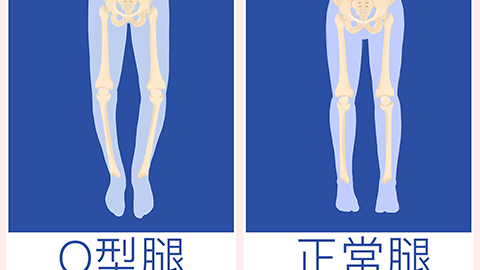What causes a large gap between the legs?
A large gap between the legs may be caused by natural skeletal structural differences, being underweight with low muscle mass, genu varum (bowlegs), hip dysplasia, lower limb muscle atrophy, and other factors. If abnormalities are present, it is recommended to seek medical attention promptly. Specific causes are analyzed as follows:

1. Natural skeletal structural differences: Congenital developmental characteristics of the hip or knee joints can lead to a natural gap in the lower limbs' alignment, which is a normal physiological phenomenon. No special treatment is required. Daily targeted exercises can strengthen lower limb muscles and maintain joint stability.
2. Being underweight with low muscle mass: Weak development of lower limb muscles or excessively low body fat percentage results in insufficient muscular support for the bones, leading to a noticeable gap between the legs. It is important to increase lower limb strength training, such as squats and lunges, and consume protein-rich foods to promote muscle growth.
3. Genu varum (bowlegs): Knee joint deformity due to inward angulation causes abnormal lower limb alignment. When standing naturally, the knees cannot come together, resulting in a gap, often accompanied by abnormal gait and knee discomfort. Mild cases can be corrected with orthopedic braces, along with calcium supplements such as calcium carbonate D3 tablets or calcium gluconate oral solution. Severe cases may require surgical intervention.
4. Hip dysplasia: Abnormal hip joint structure leads to poor articulation between the femoral head and acetabulum, causing imbalanced weight distribution in the lower limbs and an increased leg gap. Symptoms may include hip pain and restricted movement. In early stages, joint cartilage protection can be achieved using glucosamine hydrochloride capsules and chondroitin sulfate sodium tablets, combined with rehabilitation exercises. Severe cases may require surgical correction.
5. Lower limb muscle atrophy: Prolonged bed rest, lack of physical activity, or localized nerve damage can lead to muscle atrophy in the lower limbs, reducing muscle volume and supportive strength, thereby increasing the leg gap. This is often accompanied by muscle weakness and limb thinning. Treatment should be guided by a physician using medications such as mecobalamin tablets and vitamin B12 tablets to nourish nerves, along with rehabilitation exercises to promote muscle recovery.
In daily life, it is important to maintain proper posture while standing and sitting, and avoid remaining in the same position for extended periods. Regular lower limb function check-ups are recommended. If symptoms such as joint pain, muscle weakness, or a progressively widening gap occur, prompt medical evaluation is necessary to determine the underlying cause.




